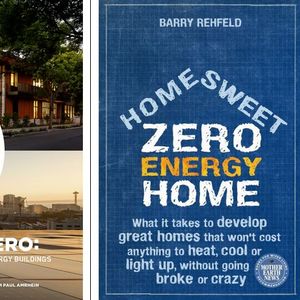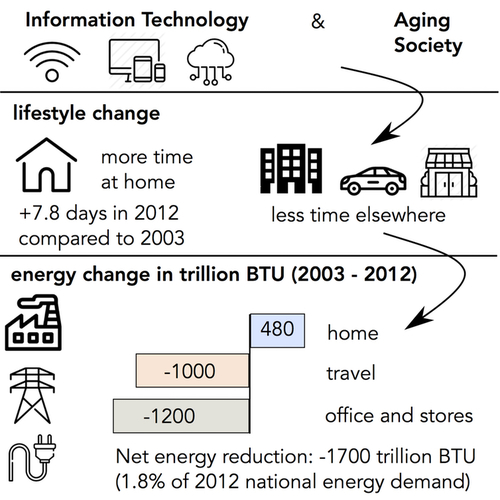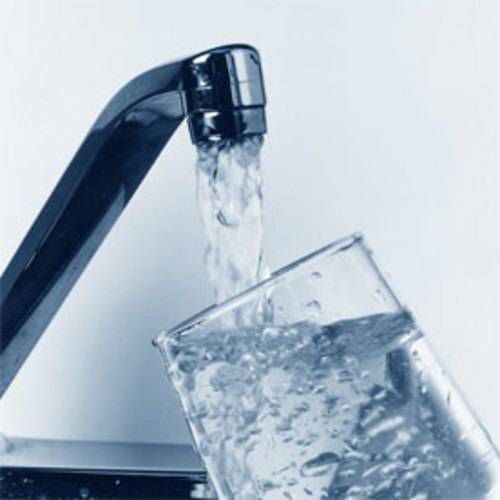
Two books that do a good job of explaining residential energy use issues to homeowners are Consumer Guide To Home Energy Savings and No-Regrets Remodeling. Both books have been around for years. Recently the publishers of these two books issued new editions, so I decided to give them a careful read.
Consumer Guide To Home Energy Savings
Since 1990, the American Council for an Energy-Efficient Economy (ACEEE) has published the Consumer Guide To Home Energy Savings. The current version is the tenth edition; its authors — Jennifer Thorne Amann, Alex Wilson, and Katie Ackerly — are the same as those of the ninth edition.
This book is an excellent homeowner’s guide to reducing home energy use. The authors make a stab at addressing basic building science concepts — for example, by explaining what a thermal envelope is, and by discussing the importance of air barriers. Most of the book’s information is accurate and helpful.
Yet the book is occasionally troubling and ultimately unsatisfying — both for its many errors and its fundamental failure to help homeowners focus on what matters most. The authors seem to lurch from topic to topic, in an apparent attempt to be comprehensive, without providing enough context to help homeowners distinguish between trivial and crucial issues.
Examples of misplaced emphasis abound:
Weekly Newsletter
Get building science and energy efficiency advice, plus special offers, in your inbox.

This article is only available to GBA Prime Members
Sign up for a free trial and get instant access to this article as well as GBA’s complete library of premium articles and construction details.
Start Free TrialAlready a member? Log in















12 Comments
Martin, speaking of errors
Martin, speaking of errors creeping into green subjects, I think you made one here. You said that "Of the three main types of ventilation systems — exhaust-only, supply-only, and balanced systems (HRVs and ERVs) — HRVs and ERVs have the lowest operating costs. The reason that they don’t make sense in mild climates has nothing to do with their operating costs; it has to do with the equipment’s high purchase and installation cost."
Not exactly. A Panasonic whisper green fan can operate as low as 3 or 4 watts in ventilation mode. While obviously not all houses are appropriate for ventilating with one or two bath fans, those houses that are appropriate and are in temperate climates have no equal in both low equipment costs AND low electrical usage costs. Do you know of an HRV or ERV that operates on 10 watts or less? In a temperate climate there just isn't enough of a temperature differential between in house temperatures and outside temperatures to overcome even the electrical usage difference.
book idea
How about Musings of an Energy Nerd, By Martin Holladay.
Whoop, I see it's already in the works --due out Nov 3.
Response to Eric Habegger
Eric,
You wrote, "In a temperate climate there just isn't enough of a temperature differential between in house temperatures and outside temperatures to overcome even the electrical usage difference [between a Panasonic fan in an exhaust-only system and an HRV]."
You're wrong, and I will cite two studies that examined the issue to back up my statement.
First of all, I will gladly stipulate that a Panasonic exhaust fan has a lower electrical draw than any HRV. However, when calculating the energy cost of a ventilation system, you have to consider (a) the electrical draw of the ventilating appliance, (b) the extra space heating energy required in winter, and cooling energy required in summer, to condition the makeup air.
Several researchers have performed these calculations. One of the first was Judy Roberson, whose calculations were made in a paper titled Ventilation Strategies for Energy-Efficient Production Homes. She compared the operating cost of an exhaust-only ventilation system to that of a balanced ventilation system with an HRV in four cities: Boston; Washington, DC; Houston; and Phoenix. In all of these cities, the operating cost of an HRV was significantly less than that of an exhaust-only system.
Similar calculations were also performed by John Semmelhack; I reported on his paper here on GBA, in an article called Are HRVs Cost-Effective? Semmelhack looked at the operating cost of ventilation systems in six cities: Atlanta; San Francisco; Charlottesville; Portland, OR; Chicago; and Burlington, VT. In all six cities, the operating cost of the HRV system was significantly less than the operating cost of the exhaust-only system.
I will post two images below that show the calculations. The upper image is Roberson's table (unfortunately, my screen grabber only caught 3/4 of the page; the link provided above will allow you to see the full table), and the lower image is Semmelhack's table.
.
Response to Norm Farwell
Norm,
Yes, Taunton Press is preparing an anthology that will republish some of my blogs (along with additional introductory material and chapter introductions to tie it all together).
However, until you posted that link, I wasn't aware that Taunton Press and Amazon had already announced the book.
Martin, thanks for the
Martin, thanks for the information. I wasn't aware of this and it didn't match my intuition, which obviously was wrong. I think in cooling climates there is a wrinkle in this calculation though. If your climate is suitable for a whole house fan (not too humid in summer) one can time the air exhaust for the coolest hours in the night. That should have some impact on the annual cooling bill. Whether it's enough to offset the heating portion of the year is another question.
Another book worth mentioning
In this category, I really like Bruce Harley's "Cut Your Energy Bills Now." I think it does a good job of recommending homeowner-friendly measures and pointing out bigger opportunities that are usually better left to a professional. Out of the 150 tips there were only a handful I questioned, and I also thought that the overall balance between base load, envelope, and HVAC was pretty much right on.
Response to Jon Harrod
Jon,
I couldn't agree more. Bruce Harley is a Taunton Press author, a Vermonter, and a very smart guy. His advice is dependably good.
Taunton has published two of his books; both are authoritative and worth buying. Here is a link: Bruce Harley's books at the Taunton store.
Good news
Good news that Martin has a book in the works!
Dana, how is your book coming along?
And thanks for the pointer to Bruce Harley's books.
Consumer Guide indeed dated
Martin, thanks for your detailed review. I really wish that ACEEE would give me an opportunity to make revisions before new editions are issued. I've offered to do so in the past, but they haven't taken me up on the offer. It is indeed woefully out-of-date. If I, or someone else, really does a revision (instead of just adding a new cover), your input will be invaluable. I agree with most of your points—though not the point you always make that it doesn't do any good to install an outdoor air conditioner compressor in the shade. I just can't believe that carrying out the heat exchange with cooler outside air doesn't have some benefit.
Reply to Alex Wilson
Alex,
Thanks for your reply. As an author, I can appreciate the frustration resulting from your publisher's refusal to let you update an out-of-date book before it is reprinted in a "new" edition.
Concerning outdoor air temperature: The air on the shady side of a house isn't any cooler than the air on the sunny side of the house. If you use an ordinary glass-bulbed thermometer to read the air temperature, and the glass bulb is in the sun, it gives a false reading.
When you are standing in the sun and feeling hot, the feeling arises from solar radiation, not the air temperature. But all your air conditioner's condenser cares about is the air temperature.
When meteorologists report that the outdoor air temperature is 80 degrees F, that means it is 80 degrees everywhere. Small variations in air temperature directly adjacent to the siding of a house are irrelevant, because the volumes of air where these microclimates occur are tiny.
Hard to imagine it doesn't matter at all
When the compressor is running and pulling huge volumes of air through its condenser, it is circulating enough air that local pockets of warm air probably don't matter. But I could see two cases in which it would matter.
One is that on moderate days when the A/C doesn't kick on until 2 or 3 PM, the noon sun will warm case of the compressor and warm up the whole thermal mass of the metal in it. Then when it starts up it is at a disadvantage relative to a unit that started out cooler. I haven't done the analysis to see whether that would be significant.
The other would be a case in which one side of the house has a large wooded shady area, which the other side is open, and perhaps near lots of asphalt. The wooded area could truly have cooler air, both because of shade and because of evaporative cooling. For example, this report gives examples on different spatial scales, including
"a cooling band of 1–2 °C extended some 20 m around a small (60 m by 40 m; 0.24 ha) greenspace in Kumamoto City, Japan (Saito, 1990–91)"
And from the reference cited the air temperature inside the 60 x 40 m area was 2.5 to 3 C lower than in the surrounding region.
Response to Charlie Sullivan
Charlie,
I agree with your first sentence, which sums up the correct answer to this puzzler: "When the compressor is running and pulling huge volumes of air through its condenser, it is circulating enough air that local pockets of warm air probably don't matter."
The way that heat is removed from the outdoor coil is that large volumes of air are blown past the coil, transferring the heat from the coil to the moving air (as I'm sure you know). While solar radiation can, indeed, heat up the metal jacket surrounding the condenser, the temperature of this metal jacket won't be high enough to significantly change the temperature of the large volumes of moving air.
Concerning your hypothetical example #2 -- the example from Japan -- count me a skeptic. I seriously doubt that there are many houses with night-and-day microclimates on opposite sides of the house.
Log in or become a member to post a comment.
Sign up Log in